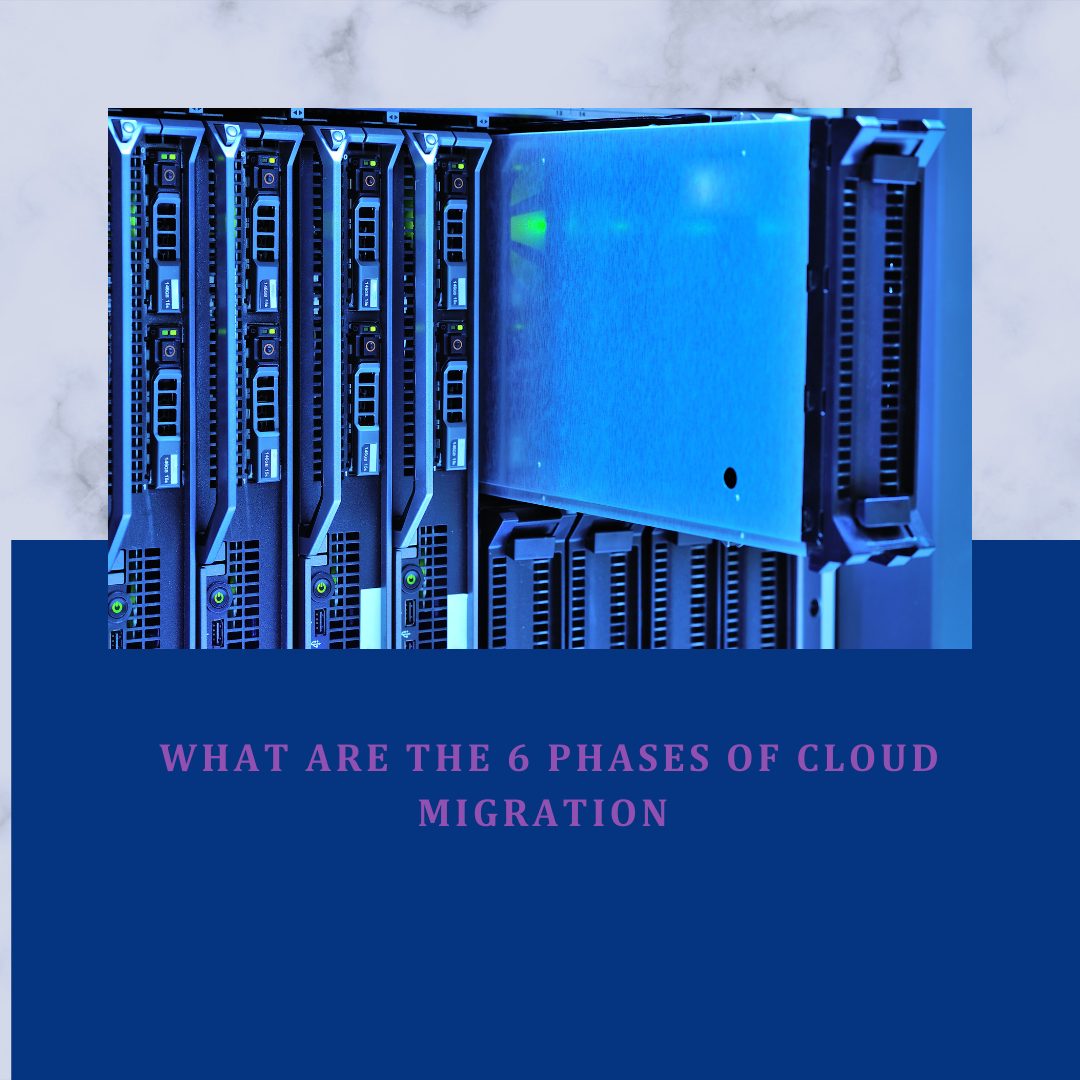What are the 6 Phases of Cloud Migration
Have you ever heard of a business in the present world that doesn’t leverage cloud computing?
Don’t think so!
Do you ever wonder why?
Why is it impossible for a business to be present and function without the cloud?
Because the extent to which businesses of today have the possibility to reach and scale is impossible to achieve without the support that a cloud platform provides!
The cloud adoption was not as smooth in the beginning, especially for the SMBs.
But now things have changed, and for the better only!
Now even early-stage start-ups are leveraging the power that these cloud platforms have to offer!
Now they are a must and an integral part of a business!
When it comes to choosing a cloud platform for a business, every granular detail about the business is evaluated!
It’s like choosing the perfect formula that can serve as long as the business lasts!
And one of them is the different phases of cloud migration!
Ever heard of it?
No?
Then you have landed on the right blog – and let’s get to know about it!
The 6 Phases of Cloud Migration
There is major 6 Phases of migration that are as follows –

The Assessment Phase
This is the first and the most crucial phase of the migration which acts as the foundational stone and to put it right!
What happens in the assessment phase?
Well, evaluation – a lot of evaluation!
What gets evaluated – a company has a lot of infrastructure and business processes that need to get evaluated first!
- Current IT Infrastructure
- Applications used
- The amount of data a business deal with
A good assessment is crucial because it helps us understand what exactly the needs are and for that how much needs to be invested!
The focus of this phase is to determine areas of the organization’s IT infrastructure suitable for cloud migration, potential obstacles in the migration process, and possible advantages in migrating to the cloud.
It presents the current state picture and lays the groundwork for a proper migration.
Key Activities Included –
Inventory Existing Systems – To begin with, one has to write up all the applications, data, as well as the infrastructure components.
Analyze Dependencies – Undoubtedly, it is important for a System administrator to understand the interdependency of the programs/ the network of applications and services.
Identify Implications of Migration – Assess the possibility of incurring the various losses regarding migration and the gains that can be accrued as incorporates flexibility and efficiency.
Also Read: The Role of Generative AI in Personalizing Customer Interactions
Strategy & Planning Phase
Consequently, after the assessment stage, the process moves to the formation of strategies. This phase entails the formulation of the specific migration plan.
In this strategy phase, the organization is expected to define its goals and objectives, assess the worth of the clients, set the scope of the strategic plan, and select the market segments that are most profitable and suitable for the organization.
In this phase, an organization will define its migration strategy and identify applications which are critical to it and choose the preferred migration techniques.
Using the compilation of peer-reviewed articles for the strategy phase, the purpose of this paper is to elaborate on the following aspects:
The latter is to make sure there’s a clear and sound plan of the strategies which aim to ensure effective migration. It assists in setting objectives, time frame and determining the meanings of success.
Key Activities Included –
Set Goals – It is also important to define the organization’s projected goals in undertaking cloud migration.
Create a Timeline – Outline a practical roadmap that focuses on a time frame for migration and its activities.
Choose Migration Tools and Techniques – For rehosting, refactoring, or re-platforming, use proper tools and standard that should be followed during the migration process.
Possible Assignment – Success Criteria Define the standards used to determine the migration’s success.
The Design Phase
The design phase is about forming a detailed map for the new cloud environment.
This phase makes sure that the new setup of the organization will be in line with expectations and has the advantage of cloud computing.
Thus, the following key elements are addressed in the design phase –
In this stage, the architects and IT teams are responsible for designing the new architecture of the future cloud.
The design phase is an important stage of any project as it focuses on developing the detailed plans and outlines for the project needed for the succeeding phases of the project cycle.
To achieve this goal, one must design an architectural structure that meets the needs of the organization – or the customer – and is proved, reliable, and well–defended against cyber threats.
Key Activities included –
Design Architecture – Define an architectural layout of the cloud environment; including the service, network, storage, and compute service models.
Plan for Security and Compliance – It is important to incorporate all security features required in the design and to conform to set and tested standards.
Prepare for Integration – Organize how the new cloud environment will interact with existing local infrastructure and other cloud solutions.
The Actual Migration Phase
The migration phase is more where the data, applications, and working load physically moves to the cloud.
This phase is the most delicate, which involves the physical transfer of goods, and its success will determine the success of the whole relocation process.
Now let us dive deeper into the migration phase and find out what happens here.
In this phase, the organization deploys migration plans that will transfer all the institutional assets onto the cloud.
The key goal is to meet the migration plan and objectives while causing the least disruption to organizational processes.
Key Activities Included –
Transfer Data – Migrate data from internal or any other cloud environment to the new cloud environment.
Reconfigure Applications – Retarget applications in order for them to work accurately in the new setting.
Perform Tests – Do checks to be sure all will run as planned.
Address Issues – Overcome all the problems that may occur in the course of migration.
The Validation Phase
Once the migration is complete, the next step is usually validation.
This phase ensures that all the components are working as required in the new cloud environment.
This seven-to-ten-day phase seeks to determine the cause of the discrepancies noted in the Planning phase.
While validating, different tests are run as well as monitoring to confirm that the new arrangement is perfect in terms of performance as well as the level of security.
Validation Phase’s purpose is to establish concrete facts and evidence about the identified problems and to examine what causes them and why they occur.
This means that the cloud setup is fully functional for the organization.
Further, it also means that the cloud setup matches the organizational expectations.
Key Activities Included –
Conduct Thorough Testing –They are functional test, performance test and security test.
Monitor Performance – A very important activity that should be carried out is to periodically assess how well the new environment is doing, and if there is any aspect that requires attention.
Validate Security Controls – Security should be well addressed and enhanced so that it operates efficiently.
User Acceptance Testing – The feedback in this case will focus on the end-users to determine if the system provides solutions to their problems.
Also Read: How can DevOps Improve Software Development
The Final Phase of Optimization
The last activity in cloud migration is an optimization phase whose goal is to reach optimal status.
There is sometimes a need to tweak the environment to optimize the expenses, boosting the effectiveness of the cloud environment.
What occurs in the optimization phase?
Optimization entails the search for opportunities to increase productivity, reduce costs and avoid hitting the peak that cannot be breached in the organization.
Optimization phase is aimed at finding the most optimal parameters for sufficient performance of the designed system and its components.
The goal already mentioned above remains the key one: to minimize the costs of using the cloud environment.
Key Activities Included –
Monitor Usage – It is also important to track resource use continually so that they can tell in which aspect more is required.
Optimize Resource Allocation – A change to the resource should be made in order to ensure that resources are properly utilized.
Implement Best Practices – In this regard, it is necessary to follow the best practices for the use of clouds by increasing the performance of applications, ensuring their security, and optimally managing the costs.
Continually Refine – It is necessary to audit and optimize the cloud environment on a routine basis in accordance with the current requirements.
Conclusion
So, these are the 6 Phases of Cloud Migration – whether you are adopting a cloud for the first time or migrating to a new cloud platform, your team must carefully consider all your options.
Cloud choice for a business is like selecting a storage facility where all past, present, and future will exist and operate – so think carefully and make an informed decision!



